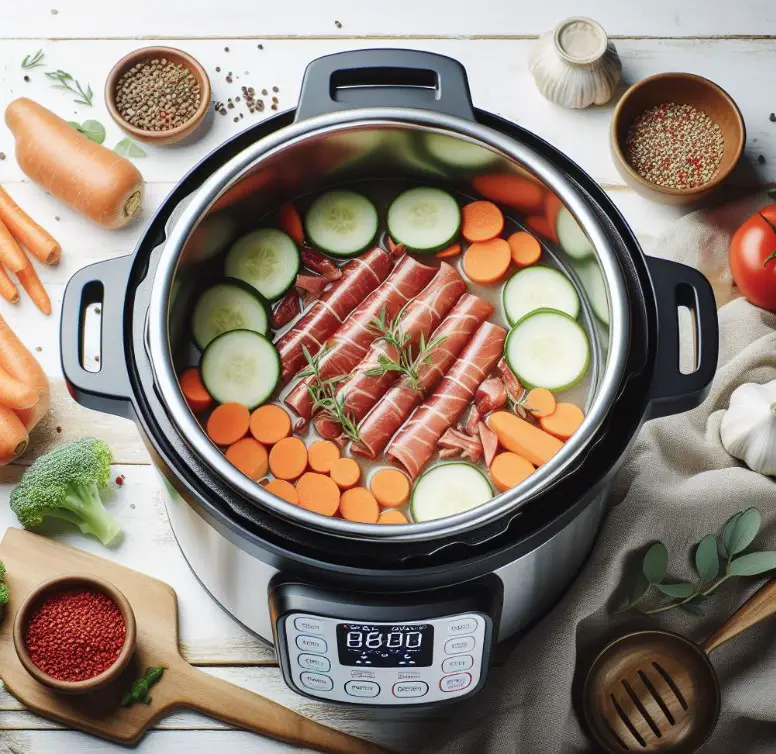Can you use slow cooker liners in an Instant Pot? This is a question that many Instant Pot owners have asked themselves. Slow cooker liners are a popular kitchen accessory that make cleaning up after cooking a breeze. But are they safe to use in an Instant Pot? As an AI language model, I will share my knowledge and research on this topic.
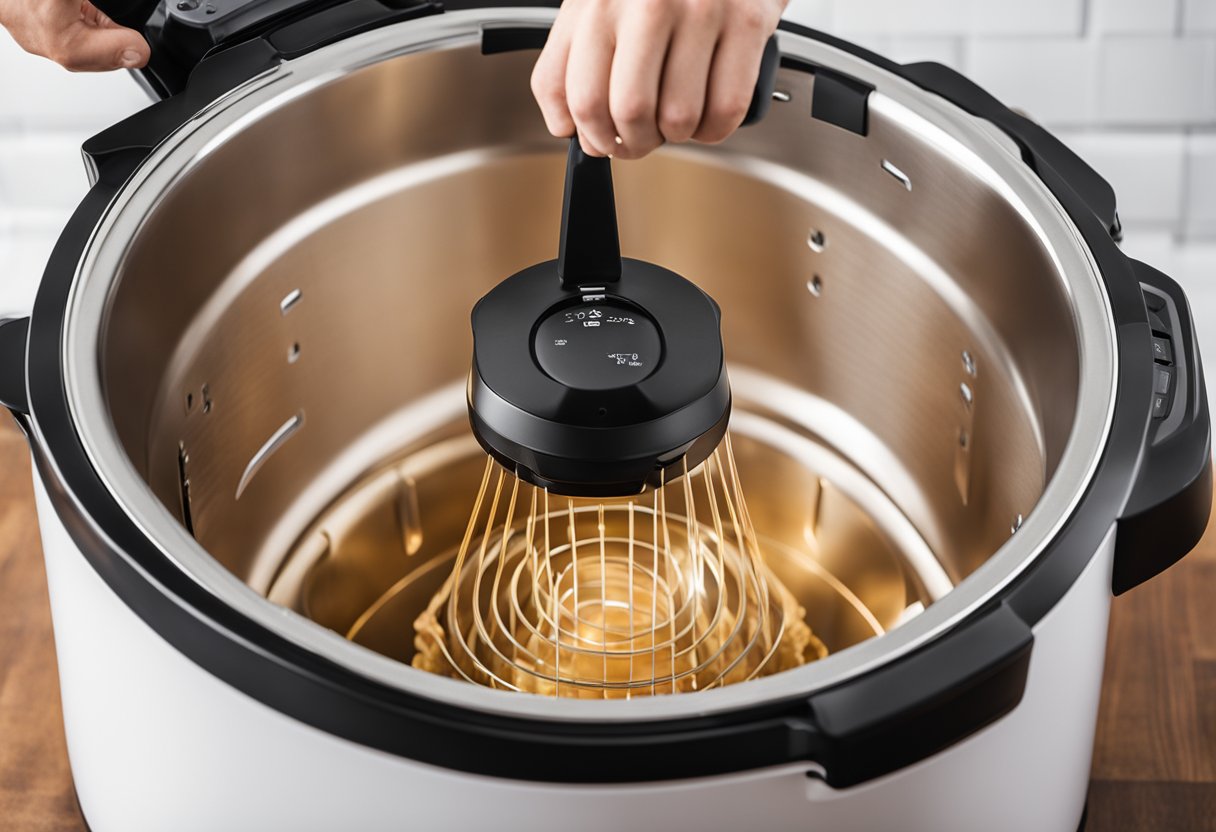
Instant Pots and slow cookers are both popular kitchen appliances, but they work differently. Instant Pots are a type of pressure cooker that uses steam to cook food quickly, while slow cookers use low heat to cook food over a longer period of time. While both appliances are designed to make cooking easier, they have different safety requirements. As such, it’s important to understand the differences between the two and how they affect the use of slow cooker liners.
Using slow cooker liners in an Instant Pot is a topic that has been debated among cooks and Instant Pot enthusiasts. Some say that it’s perfectly safe to use slow cooker liners in an Instant Pot, while others warn against it. In this article, I will explore the safety and compatibility of using slow cooker liners in an Instant Pot, as well as the advantages and potential risks of doing so.
Understanding Instant Pots and Slow Cookers
As a cooking enthusiast, I understand the importance of having the right kitchen appliance to make your culinary experience more efficient and enjoyable. Two popular appliances that come to mind are the Instant Pot and the slow cooker.
Instant Pot Versatility
The Instant Pot is a versatile kitchen appliance that can be used as a pressure cooker, slow cooker, rice cooker, yogurt maker, steamer, and more. It is designed to cook food quickly and efficiently, making it a great option for busy individuals who want to prepare healthy meals without spending hours in the kitchen. The pressure cooker mode is particularly useful for cooking tough cuts of meat and beans, as it can significantly reduce cooking time.
Slow Cooker Basics
On the other hand, a slow cooker is a kitchen appliance that is designed to cook food slowly over a long period of time. It is ideal for preparing stews, soups, and other dishes that require low and slow cooking. Slow cookers are easy to use and require little attention, making them a great option for busy individuals who want to come home to a hot meal after a long day at work.
It is important to note that while the Instant Pot has a slow cook function, it is not the same as a dedicated slow cooker. The slow cook function on the Instant Pot is designed to mimic the low and slow cooking of a traditional slow cooker, but it may not produce the same results.
In conclusion, both the Instant Pot and the slow cooker have their unique advantages and disadvantages. It is up to the individual to decide which appliance best suits their needs and cooking style.
Safety and Compatibility

Heat-Resistant Materials
As a professional chef, I have found that slow cooker liners are a great tool for making cleanup quick and easy. Slow cooker liners are made of heat-resistant material, such as heat-resistant nylon resins, which can withstand high temperatures. This makes them safe to use in an Instant Pot, as long as you are using the slow cooker function. The heat-resistant material ensures that the liners won’t melt or break down during cooking, which could cause a potential safety hazard.
Chemical Concerns
When it comes to slow cooker liners, there have been some concerns about the chemicals used in their production. However, many manufacturers now produce BPA-free liners, which are safer for use in cooking. It is important to note that BPA-free does not necessarily mean that the liners are free of all chemicals. Some liners may contain other chemicals that could be harmful if ingested. Therefore, it is important to choose liners that are FDA approved and made from safe materials.
In conclusion, it is safe to use slow cooker liners in an Instant Pot as long as you are using the slow cooker function and choosing liners made from heat-resistant, FDA-approved materials. Always read the label and choose BPA-free liners to minimize the risk of exposure to harmful chemicals.
Using Slow Cooker Liners in an Instant Pot
Can You Use Slow Cooker Liners in an Instant Pot?
As someone who frequently uses slow cookers and instant pots, I have often wondered if I could use slow cooker liners in an instant pot. After conducting some research, I have found that the answer is yes, you can use slow cooker liners in an instant pot. However, it is important to note that slow cooker liners are designed exclusively for slow cooking, and the best way to use them would be in the instant pot’s slow cooker mode. If you plan to use the Instant Pot for any other purpose, you cannot use the slow cooker liner.
Guidelines for Use
When using slow cooker liners in an instant pot, there are some guidelines that you should follow. Instant Pots operate under pressure, which means that they generate a lot of heat and steam. While slow cooker liners are designed to withstand heat, they may not be able to withstand the high pressure generated by an Instant Pot. Therefore, it is recommended that you only use slow cooker liners in the slow cooker mode of the Instant Pot.
Additionally, make sure that the liner is heat resistant and safe for use with food. Some slow cooker liners may contain harmful chemicals that can leach into your food when exposed to high temperatures. Always read the instructions and packaging carefully before using a slow cooker liner in your Instant Pot.
In conclusion, slow cooker liners can be used in an Instant Pot, but it is important to follow the guidelines for use and ensure that the liner is safe for use with food. By using slow cooker liners in the slow cooker mode of an Instant Pot, you can make cooking easier and cleaning up a breeze.
Alternatives to Slow Cooker Liners
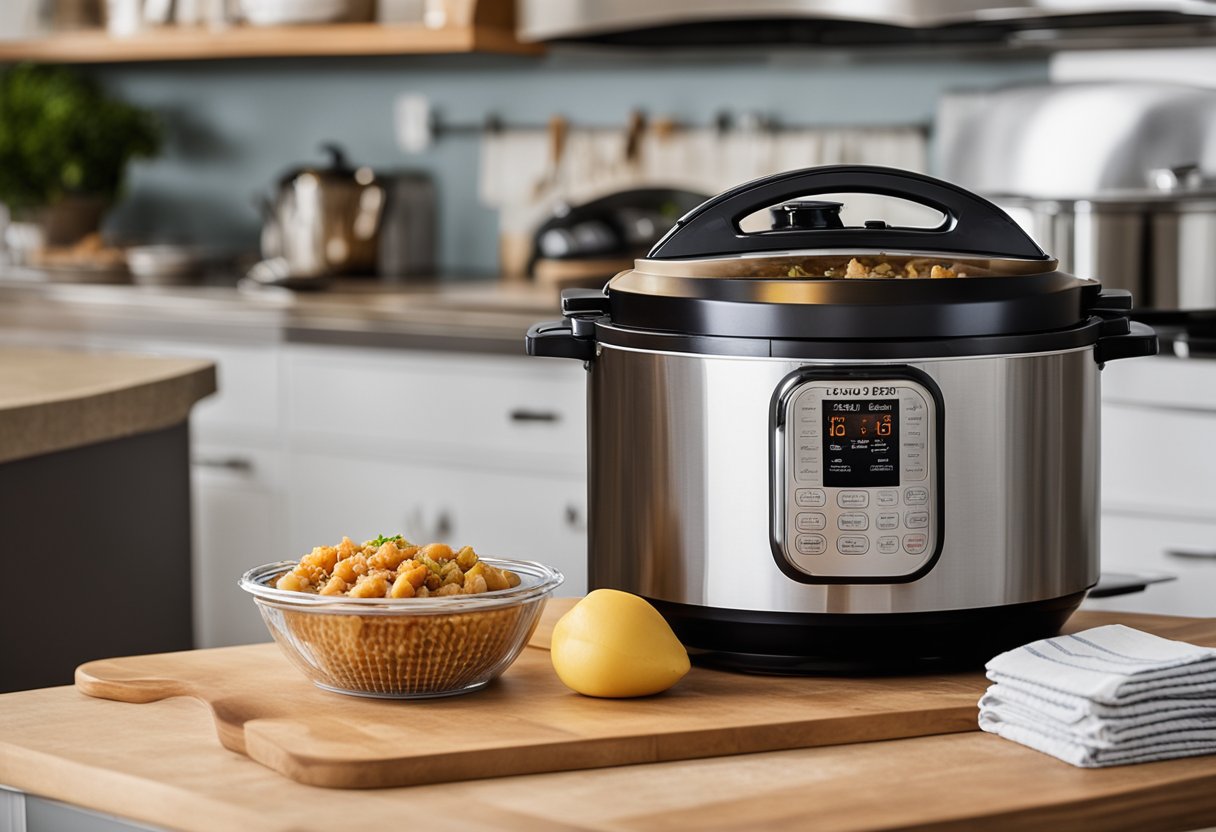
When it comes to cooking with an Instant Pot, using a slow cooker liner can be a convenient way to make cleanup easier. However, if you don’t have any liners on hand or prefer not to use them, there are several alternatives that you can try. Here are a few options to consider:
Silicone Liners
Silicone liners are a popular alternative to slow cooker liners. They are reusable, easy to clean, and can withstand high temperatures. Plus, they are environmentally friendly since they reduce waste. With a silicone liner, you can cook your food without worrying about it sticking to the pot or having to scrub it clean afterwards. Just be sure to check that the liner is compatible with your Instant Pot model before using it.
Parchment Paper
Parchment paper is another option for those looking for an alternative to slow cooker liners. It’s easy to find and can be cut to fit the size of your Instant Pot. Parchment paper is also disposable, making cleanup a breeze. However, it’s important to note that parchment paper can tear or break down during cooking, so it’s best to use it for recipes that don’t require a lot of stirring or movement.
Aluminum Foil
Aluminum foil is a versatile option that can be used for a variety of cooking purposes, including as an alternative to slow cooker liners. It’s easy to mold to the shape of your Instant Pot and can withstand high temperatures. However, it’s important to note that aluminum foil can react with acidic foods, so it’s best to avoid using it for recipes that contain tomatoes, citrus, or vinegar.
Overall, there are several alternatives to slow cooker liners that you can try when cooking with your Instant Pot. Whether you choose a silicone liner, parchment paper, or aluminum foil, each option has its own benefits and drawbacks. Ultimately, the choice comes down to personal preference and what works best for your cooking needs.
Advantages of Using Liners
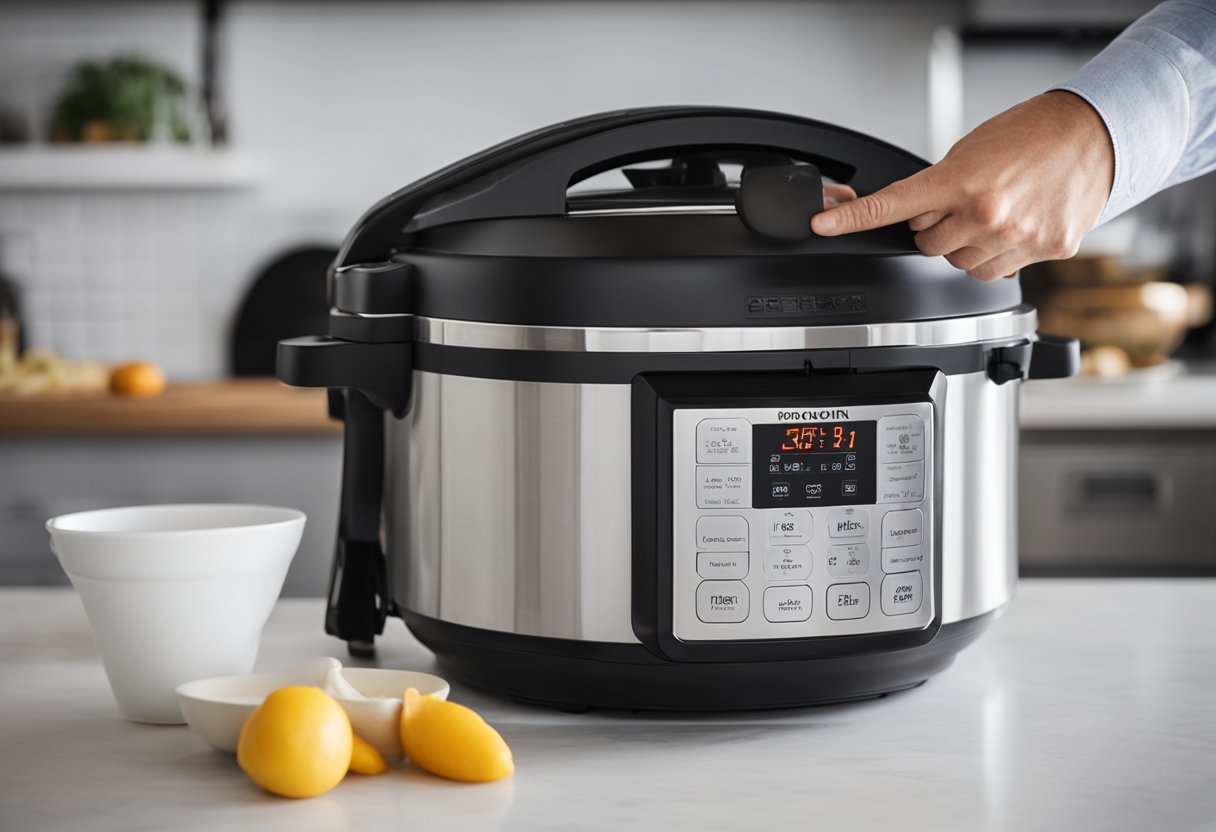
As someone who has used slow cookers and Instant Pots for years, I can confidently say that using liners in your Instant Pot can make your life a lot easier. Here are some of the advantages of using liners:
Cleanup Efficiency
One of the biggest benefits of using slow cooker liners in an Instant Pot is the cleanup efficiency. With a liner, you can simply lift out the liner and throw it away, leaving your Instant Pot clean and ready to use again. This saves a lot of time and effort in cleaning up after cooking, especially when you are dealing with tough, sticky messes.
Food Preservation
Another advantage of using slow cooker liners is that they help preserve the flavor of your food. The non-stick surface of the liner helps prevent your food from sticking to the bottom of the pot, which can cause it to burn and lose its flavor. Additionally, the liner helps keep the moisture in your food, which can help it stay tender and juicy.
Overall, using slow cooker liners in your Instant Pot is a great way to make your cooking experience more efficient and enjoyable. It saves time and effort in cleaning up, while also helping to preserve the flavor and texture of your food.
Potential Risks and Precautions
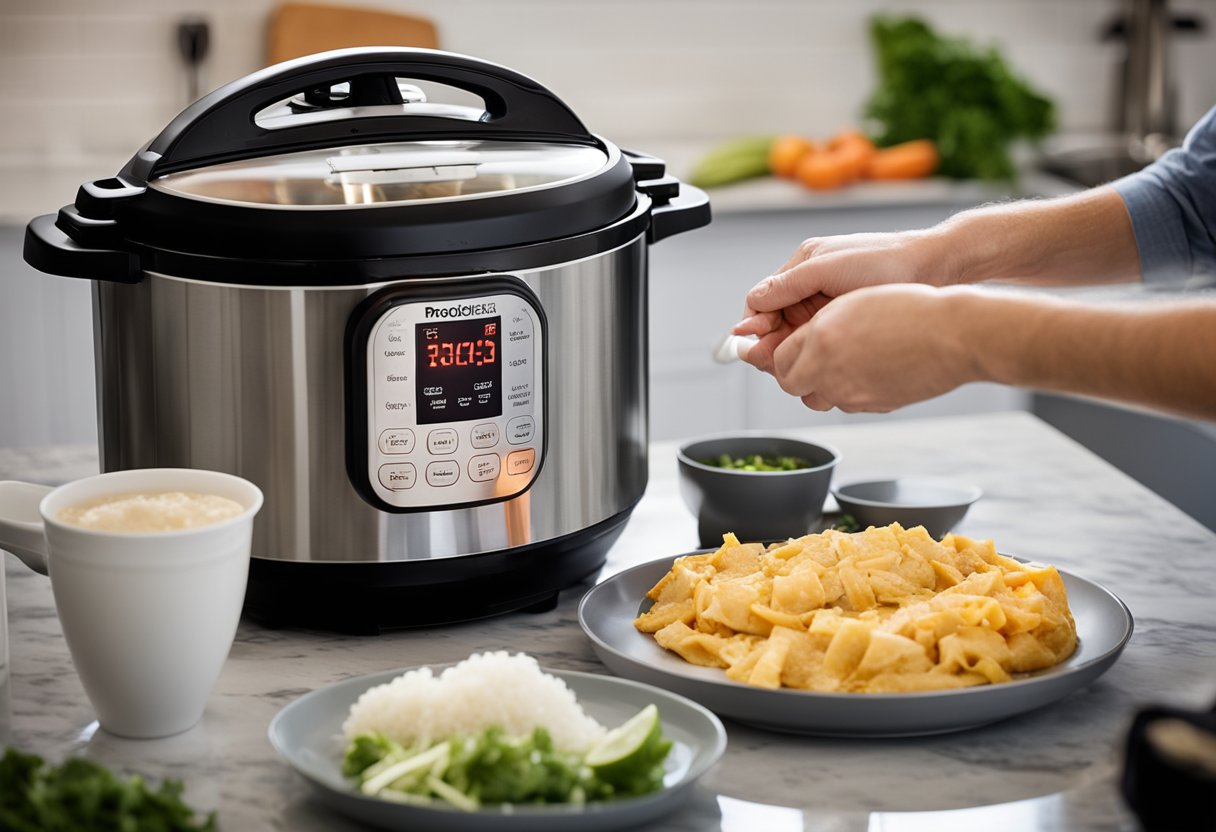
Melting and Plastic
Using slow cooker liners in an Instant Pot may seem like a good idea for easy clean-up, but it can come with potential risks. Slow cooker liners are made of plastic, and the high cooking temperatures and pressure of an Instant Pot can cause the liner to melt or burst, potentially causing a mess and hazards. As a result, it is essential to ensure that the liner is compatible with the Instant Pot and can withstand high temperatures.
To avoid the risk of melting and plastic contamination, I recommend using Instant Pot-approved accessories that are safe for use with the Instant Pot. Additionally, avoid using low-quality liners that may contain harmful chemicals that can leach into your food.
Health and Safety
Another potential risk of using slow cooker liners in an Instant Pot is the possibility of bacterial growth. Slow cooker liners may create a warm and moist environment that promotes bacterial growth, leading to health risks. Therefore, it is essential to follow the manufacturer’s instructions carefully when using a liner and never reuse a liner.
To ensure your safety and avoid health risks, I recommend using high-quality liners made from food-grade materials that are safe for use with the Instant Pot. Always dispose of the liner after use and clean the Instant Pot thoroughly to prevent bacterial growth.
In summary, using slow cooker liners in an Instant Pot can come with potential risks such as melting, plastic contamination, and bacterial growth. To avoid these risks, use Instant Pot-approved accessories, high-quality liners made from food-grade materials, and always follow the manufacturer’s instructions carefully.
Cooking Tips and Tricks
Preventing Sticking and Burning
When using slow cooker liners in an Instant Pot, it’s important to prevent sticking and burning. To do this, I recommend using a small amount of oil, butter, or cooking spray on the bottom of the liner. This will create a thin layer that will help prevent food from sticking to the liner and burning.
Additionally, when cooking rice, stews, casseroles, or soups, it’s important to add enough liquid to cover the ingredients. This will help prevent sticking and burning, and also ensure that the food is cooked evenly. If you notice that the food is starting to stick or burn, you may need to add more liquid or reduce the cooking time.
Enhancing Flavor and Texture
Using slow cooker liners in an Instant Pot can also help enhance the flavor and texture of your food. To do this, I recommend adding herbs, spices, or other seasonings to the liner before adding the food. This will infuse the flavors into the food as it cooks, resulting in a more flavorful dish.
Another way to enhance the texture of your food is to use the slow cooker function on your Instant Pot. This will allow the food to cook slowly and evenly, resulting in a tender and juicy dish. If you prefer a crispy texture, you can also use the sauté function on your Instant Pot to crisp up the food after it has finished cooking.
Remember, when using slow cooker liners in an Instant Pot, it’s important to follow the manufacturer’s instructions and use the correct cooking time and temperature. With these tips and tricks, you can create delicious and flavorful meals with ease.
Will using slow cooker liners in an Instant Pot affect the flavor of the food?
Using slow cooker liners in an Instant Pot should not affect the instant pot vs slow cooker flavor of the food. The liner’s purpose is to make cleaning easier, while also preventing food from sticking to the pot. It should not alter the taste of the dish being prepared.
Selecting the Right Liners
When it comes to using slow cooker liners in an Instant Pot, selecting the right liners is crucial. Here are some factors to keep in mind when selecting liners for your Instant Pot.
Types and Brands
There are different types and brands of slow cooker liners available in the market. Some popular brands include Reynolds Slow Cooker Liners, Kooc, and Crockpot Liner. Each brand has its unique features and benefits. For instance, Reynolds Slow Cooker Liners come with a nylon coating that makes them more durable and resistant to tearing. Kooc liners, on the other hand, are made with food-grade silicone and are reusable, making them an eco-friendly option.
Size and Fit
When selecting liners for your Instant Pot, it is essential to consider the size and fit of the liners. The liners should fit snugly into the Instant Pot to prevent any leakage or tearing. Most liners come in standard sizes that fit most Instant Pots. However, it is always a good idea to check the packaging to ensure that the liners are compatible with your Instant Pot.
In conclusion, selecting the right liners for your Instant Pot is essential to ensure that your cooking experience is hassle-free. By considering factors such as types, brands, size, and fit, you can find liners that are the perfect fit for your Instant Pot and your cooking needs.

